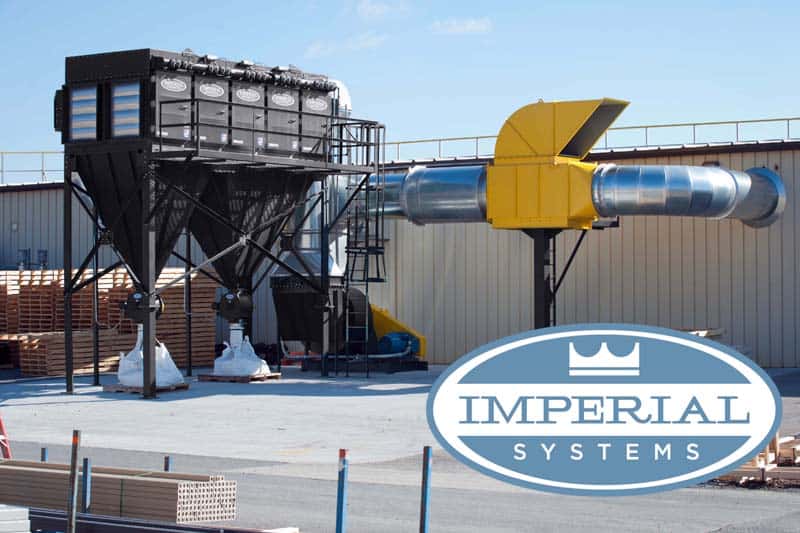
by Imperial Systems | Aug 29, 2017 | Woodworking
Traditionally, the woodworking industry has relied on cyclones and baghouses. The cyclone is the workhorse for removing larger particles with a minimum of hassle, but it lets smaller particles through. The baghouse, the traditional workhorse of the wood industry, has been the go-to dust collector for this application for a long time. However, this is changing as cartridge collectors are making an impact. The CMAXX for woodworking and wood dust is certainly proving itself in the field.
Cartridge Collector Advantages for Wood Dust
A cartridge collector like the CMAXX offers many advantages over a baghouse. The first one is obviously the size. Because cartridge filters are pleated, you can fit the same amount of surface area into a relatively tiny collector.
The second advantage of CMAXX for woodworking is the ease of changing filters. A baghouse full of old sawdust is not anyone’s idea of fun, and it may even be considered an OSHA confined space. But with a CMAXX cartridge collector, lift rails easily slide the filters out. So, there’s no getting inside the collector and no climbing around in a mess of wood dust. Plus, there’s no changing dozens or hundreds of bags.
A third advantage to using a CMAXX for woodworking is that it can capture very small particles very efficiently. With DeltaMAXX nanofiber filters with a MERV 15 rating, your shop will be cleaner than ever before, without the fine dust that used to get through.
A fourth advantage is the ease of customizing a CMAXX for your woodworking application. Many different types of fire and explosion prevention are available, improving safety and protecting buildings from damage. Also, for special applications, options like overbags can help. They make cartridge filters even better at handling the difficult material a woodworking application can create.
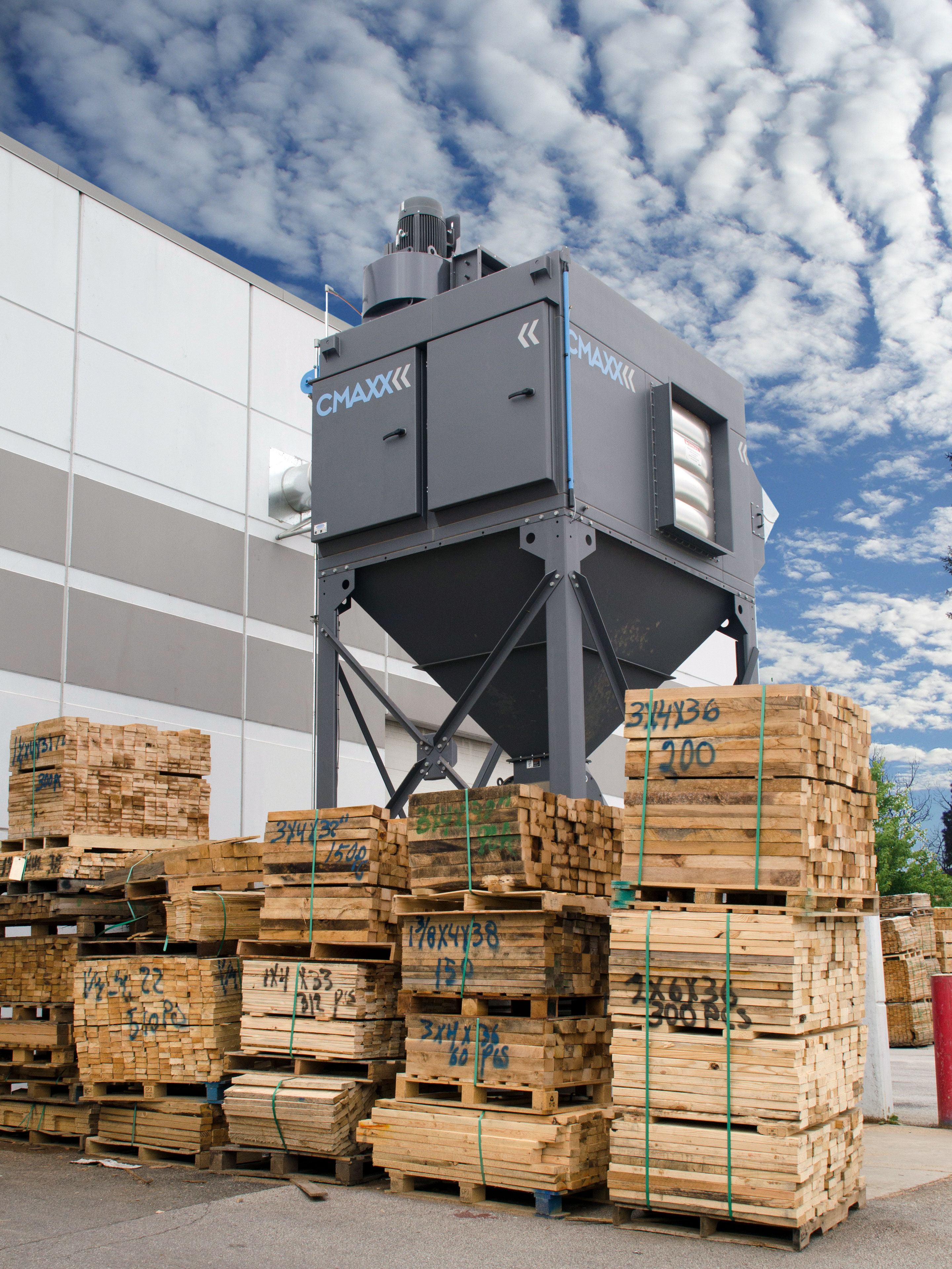
CMAXX Outperforms the Baghouse
We have worked overtime with many woodworking companies, and they usually want baghouses. However, recently many customers have checked out the CMAXX for wood dust. They looked at how it works, and the quality, and decided to give it a try.
What they’ve found is that for some types of woodworking applications, the CMAXX outperforms a baghouse. It has a much smaller footprint and is much less messy and time-consuming. Many of our woodworking customers are Amish and strongly value efficiency, good quality, and things that just work well. They have chosen CMAXX for woodworking because it meets their high standards.
Consider a CMAXX designed by our systems specialists for your woodworking application. It can handle everything from mixed large and small particulate to extremely fine wood dust. It can save you time and space, protect you from the risk of combustion, and make your life easier. Allow one of our specialists to show you how a CMAXX for woodworking is right for our shop. It can be an amazing value in quality, space and time savings, and efficiency.
Read more

by Imperial Systems | Aug 18, 2017 | Uncategorized
The CMAXX is a modular dust and weld fume collector that can be sized for any application. What you may not know is that the CMAXX is also a modular ambient system. With two CMAXX collectors, one pulling air from inside the facility and the other pushing air in as a “push-pull” system, continuous ambient airflow is achieved. What happens, though, if you have multiple areas where you need dust and weld fume collection, or if you add onto your facility or equipment? With other types of systems, you would need to get rid of your current collector and buy a bigger one to handle increased airflow, then run lengths of ductwork to cover the whole space. With a modular CMAXX system, it’s easy to add another set of “push-pull” CMAXX collectors to create more ambient dust and weld fume collection. Since the system is modular, your original CMAXX system can stay in place while new units are added on to meet your changing needs.
The idea for this modular system was developed by president and CEO Jeremiah Wann as Imperial Systems Inc prepared for its transition to a new, larger building. Here, he found that we faced some challenges many other companies will be familiar with: a much larger space than the previous building, with equipment in new locations, and also with unused space for anticipated growth.
An option for dust and fume collection for the company might have been to build a huge CMAXX collector big enough to create ambient capture through the entire building, even the parts not being used yet. A collector of this size would have a lot of ductwork and need to move a very large volume of air, increasing costs.
Instead, the company hit upon a better solution: the modular CMAXX ambient system. CMAXX collectors will be installed in the parts of the building where needed, with one providing the air “push” and the other the air “pull” to keep clean air circulating. When new equipment is added, or when the company expands into the unused parts of the building, the modular CMAXX system will allow them to just add two more small CMAXX collectors to create the “push-pull” airflow in that area.
Any company can have changes in their facility, whether it’s moving things around the shop, expanding, or increased dust or fume production. Instead of buying a whole new dust and fume collector or installing a lot of new ductwork to handle your changing needs, consider the option of the CMAXX modular system: always ready for you to add on or adapt to your changing needs.
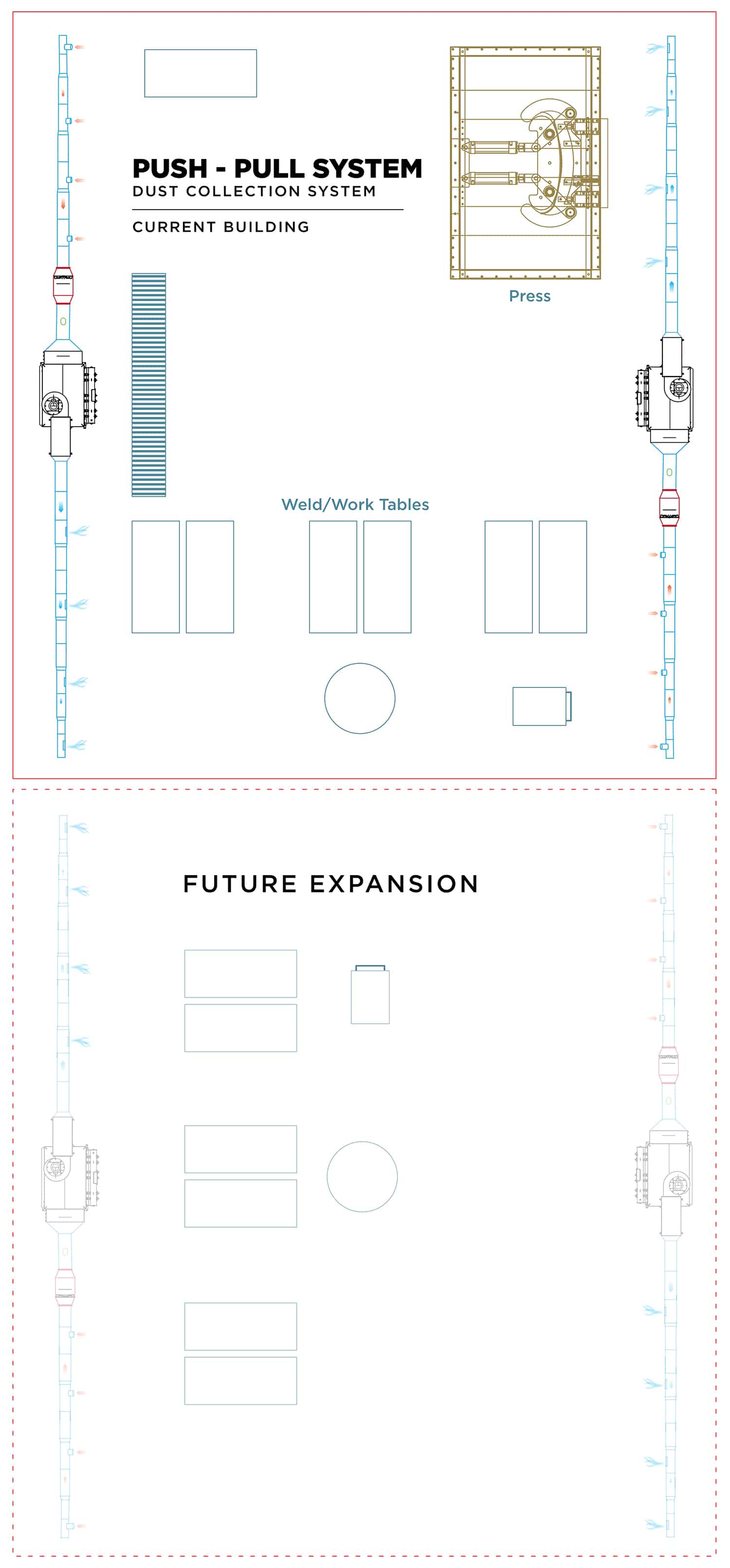
Read more
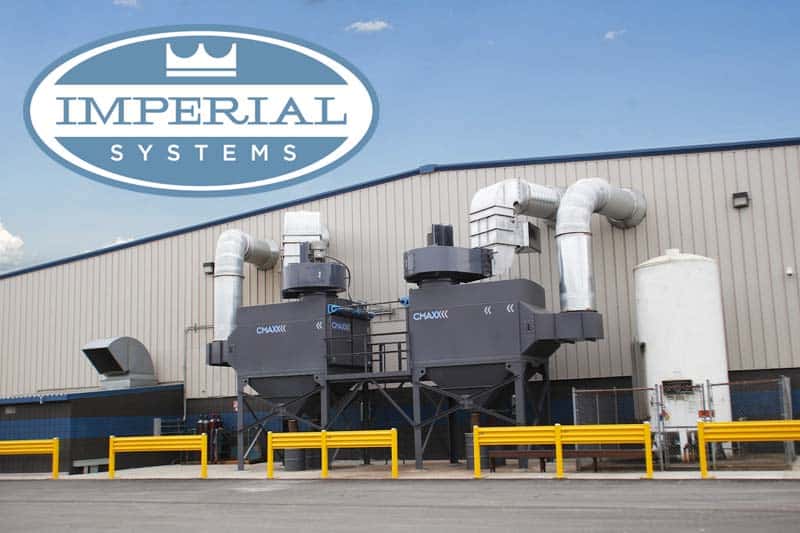
by Imperial Systems | Aug 7, 2017 | Uncategorized
With a CNC plasma cutting table, it’s essential to have some way of controlling the dust and fumes from the cutting process. One solution is a water table, where the metal being cut is underneath a layer of water that prevents it from generating fumes. The other solution is a downdraft table, where air flows down through the table and pulls dust and fumes away from the cutting area.
We have worked with customers who are using both of these types of dust and fume control on their CNC plasma tables, and we’re discovered some serious issues that people encounter with the water tables. While the water table may be a lower up-front cost than a downdraft table with a dust collection system, many people find that the ongoing costs and problems with water tables make them a bad long-term investment.
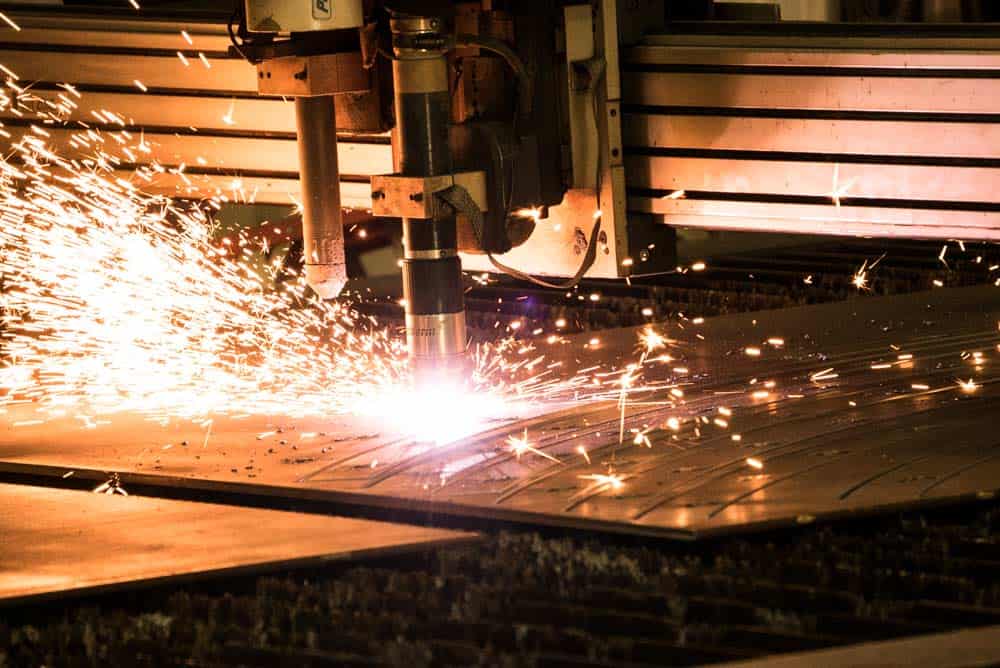
Here are some of the primary issues our customers have experienced with water tables:
“We waste a lot of time adjusting the water levels. Whenever the water level isn’t correct, you get a lot of smoke and steam in the building.”
“If the sheet isn’t sitting perfectly flat, the water doesn’t always cover it and there are a lot of fumes released from that. Also, if there’s any warping, this can create a real problem with smoke and fumes.”
“Disposing of the water is a major issue. It’s contaminated with all kinds of things, and it has to be pumped out of the machine. Then it has to be processed before we can dispose of it.”
“Once you pump out the water you have to handle all the sludge. It’s a mess to clean out, takes up a lot of time, and nobody likes dealing with it.”
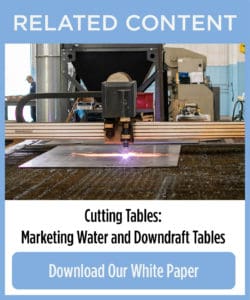 “With galvanized metal, we get ‘white rust’ corrosion from cutting on the water table. It can cause some serious damage to the parts.”
“With galvanized metal, we get ‘white rust’ corrosion from cutting on the water table. It can cause some serious damage to the parts.”
“When wet parts come off the table, they can’t just be sent off to the fabrication area. We have to have a space to set them out to dry, and they can’t be used till they’ve dried off.”
“We’ve had issues with the table overflowing or leaking, and then we’ve got dirty water all over the shop floor, and it’s a hazard and a mess.”
“Our wet table creates steam and splashes of hot water. There’s the potential for someone to get burned. We’re also concerned about water or steam damaging the cutter’s computer.”
“The water and steam evaporating off the water table puts so much humidity into the air that we’re starting to see rust on our tools and equipment, which we’re not happy about.”
ADVANTAGES OF A DOWNDRAFT TABLE:
- Almost no adjustment is needed once the system is in operation. No water levels ever need checked or refilled.
- Consistent airflow pulls fumes away from the CNC plasma cutter even if the metal isn’t flat to the table or if it warps during cutting.
- Dust is usually collected in a drum or hopper for easy disposal. No pumping, no sludge, and no figuring out how to dispose of contaminated water.
- Maintenance is minimal compared to a water table. The dust collector will require filter changes (the average is about once a year, depending on use). Changing filters is a simple process and will involve much less down time for the CNC plasma cutter than pumping water and cleaning out sludge.
- Parts come off the table ready to go. There is no wasted time letting them dry, and no wasted space for parts to sit and dry off.
- A downdraft table fully contains dust and removes it from the work area. There is no leaking or spilling water to create a hazard, and no dust or fume particulate escapes into the work area.
- The air flowing through a downdraft table produces no steam and no splashing of hot water. All sparks and hot materials are pulled down and away from the work area safely.
- A zoned downdraft table collects fumes and dust only where they are being produced, which is efficient and keeps all fumes contained to a small area for removal.
Over time, a downdraft table for your CNC plasma cutting system will save you time and money. Up-front cost is lower on a water table, but a company doesn’t buy a CNC plasma cutting system for short-term use. You’re going to have this table for a long time. And over time, our customers have consistently found that the water table costs them much more in maintenance costs, time, and potential safety hazards.
Cost is important, but one of the most important things for you is probably the quality of your product. Companies that manufacture CNC plasma cutting equipment will tell you that a downdraft table produces a cleaner cut and a higher quality product than a water table. If they tell you that a water table produces equal or better quality, you can bet they want to sell you a water table. The industry knows that if you want the cleanest CNC plasma cuts, a downdraft table is the way to go.
Read our white paper on cutting tables.
Read more





